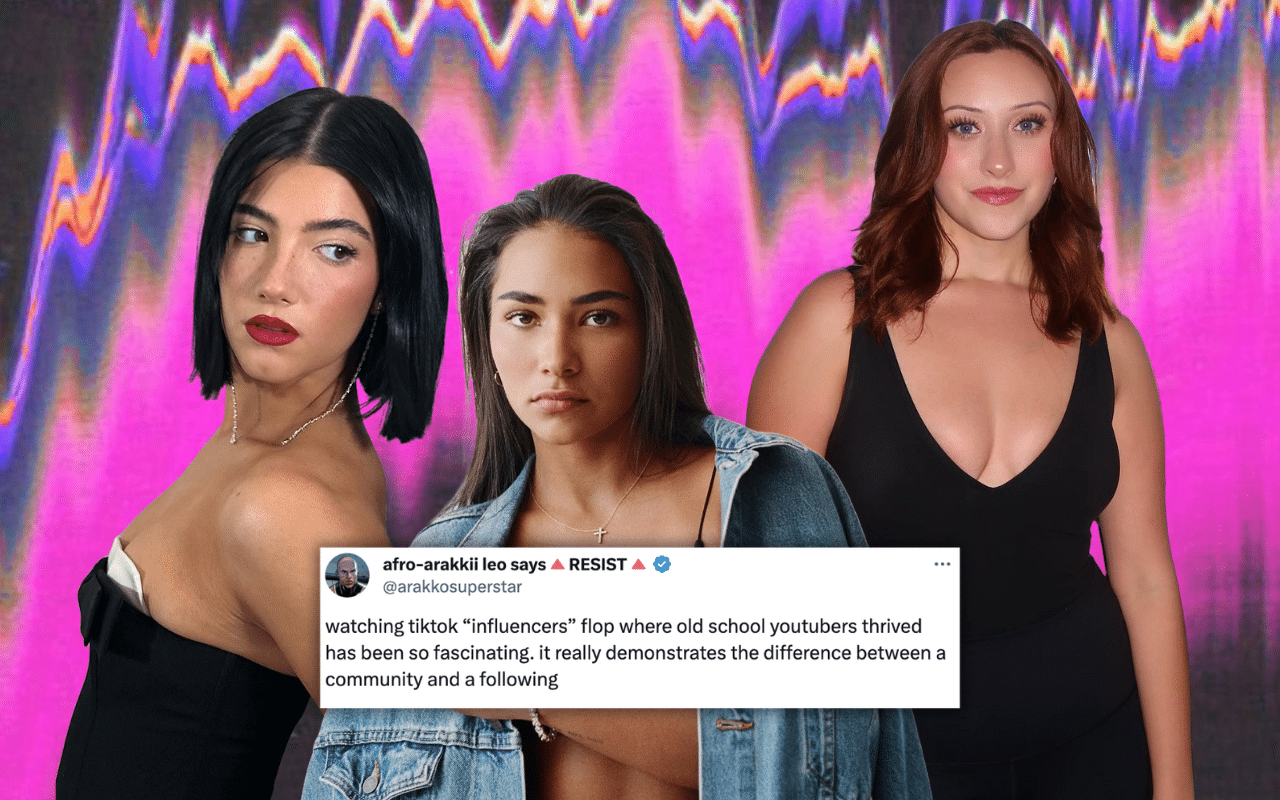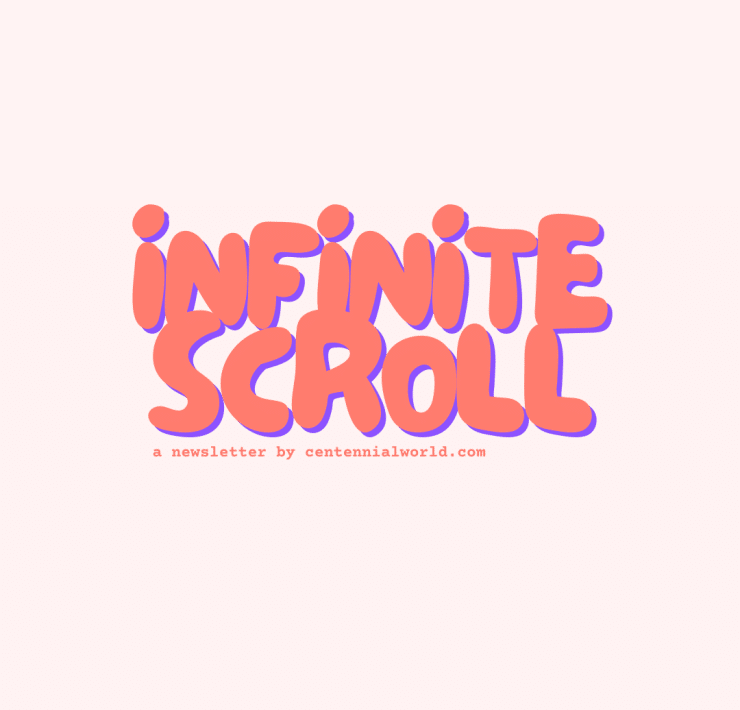
Ever since TikTok became the culture-defining app, the internet has completely changed. Gone are the days when a 30-minute daily vlog was the norm. Nowadays, internet users opt for short-form content, watching videos that are at most 10 minutes long.
While consumption habits have changed, so has the way we communicate. Watching short-form content limits the opportunity to incorporate context and critical thought, leaving TikTok comment sections susceptible to an endless dribble of “whataboutisms” and (often undue) criticism. What this means for the future of the internet cannot be overstated. As communication and consumption change, so has the way we build online communities.
Back in the day— when YouTube reigned supreme— content creators took years to build a sizeable and engaged following. Zoella, one of YouTube’s most beloved British beauty gurus, took around three years of posting consistently before hitting one million subscribers. Meanwhile, Jenna Marbles and PewDiePie reached one million followers in approximately one and two years, respectively.
There is no denying that these YouTubers reached a massive feat reasonably quickly. But by today’s standards, this turnaround is slow.
Content creators of the TikTok generation are experiencing growth at unprecedented rates. Take Charli D’Amelio, for example. Since May 2019, she has accumulated over 151.7 million followers. She became the first TikTok creator to earn 100 million followers just over one year after going viral on the app. While Charli might be an anomaly, the rate at which her public profile grew is simply impossible on other platforms— including YouTube at its height.
@charlidamelio dc @Raymondttorres @Kamilabatti
♬ WAP MASHUP – Roman Nicholas | UGC Creator
Although TikTokers, like Charli, can gain a following through one viral video, they struggle to build a community of like-minded and dedicated followers.
Due to the nature of the FYP, TikTok users see hundreds of videos a day, meaning they can easily skip a video they aren’t interested in. But given users are less likely to scroll the “following” feed than the FYP, they’re also unlikely to “unfollow” a creator. As a result, TikTokers tend to have large followings of unengaged fans.
On the other hand, YouTubers have had to carefully craft their content, building a robust fanbase and consistent viewership. Not only is this sense of community comforting for viewers, but it also ensures a much more stable career for the creator. Having spent the time and effort building a community, YouTubers have viewers who are more likely to follow them across platforms, buy merchandise, and even go out to meet them in person.
VidCon is the perfect example of how influencer culture has shifted since the advent of TikTok.
Cast your mind back to the mid-2010s. All the biggest YouTubers (and Viners) were desperate to attend the convention. There were hours-long meet-and-greets, panels stacked with creators, and a seemingly endless supply of Vidcon vlogs. But recently, the event has looked very different.
Back in 2022— the first VidCon post-pandemic—TikTok creators went viral after detailing their experiences at the convention, with many showcasing empty lines for their meet-and-greet sessions.
@missdarcei #stitch with @missdarcei Lmao #fyp #viral #vidcon
♬ original sound – Darcei
Being a “successful” influencer doesn’t necessarily mean an audience must translate beyond the digital world. If a creator can support themselves through affiliate links and the TikTok shop, so be it. However, many internet culture pundits have come to view event attendance and cross-platform virality as indicators of longevity in the digital space.
While this may seem obvious, follower counts are often blinding— leaving creators believing they have far more influence than they actually do.
Time and time again, we have seen influencers change their whole lives after going viral. And often, it doesn’t end well.
@hankyute Where did they go? What are they doing now ? #fyp #influencers #romanempire #trend
♬ original sound – 🧛♀️
TikTok user Evan Smith (@evancuate) has described this class of creators as “flop influencers.”
“When people think of influencers, I feel like they go to Alix Earle or Charli D’Amelio, and I think of like the ‘flops’,” Evan says. “Those influencers in 2020, they moved to LA, and they quit their job, and now they are like nothing…”
Evan and the viewers in the comment section go on to list the most iconic “flop influencers.”
Some crowd favourites appear to include Axel Webber and Sienna Mae. While the ‘downfall’ of Sienna and Axel could be attributed to various controversies, countless other (non-problematic) influencers have struggled to maintain relevancy over the years.
One such creator is Moop (real name Anastasiya Boryslavska), who went viral for her lipsync videos with bloodshot eyes in 2020.
As another example, Evan points to Jake Kuhlman— a creator who gained popularity for doing TikTok dances at a service station.
“What are you doing now, Jake?” Evan asks. “There is no way he is living off the money he made back then…but there is also like no way f—ing shot he is working 9-5 at a corporate office.”
@notbeansfromrango #stitch with @한 no shade
♬ original sound – swola🤟🏻
Of course, Evan is not the only TikTok user with questions.
When TikTokers “flop,” their followers often don’t hear the whole story. But @xobrooklynne, whose real name is Brooklynne Webb, stitched Evan’s video, providing a firsthand account of overnight virality and influencerdom.
After joining TikTok in 2019, Brooklynne went viral for her debut single ‘My Crown’ in 2021. This auto-tuned pop anthem centred around dismissing negativity and hate. Unfortunately, the outcome was the opposite.
@xobrooklynne i cannot believe this is on the internet for the rest of my life, but it still is one of my most favorite things ive ever done. I dont think ill ever have more fun then creating this satire performance art project 🤍 🥹 i have so many bts stories so if yall ever wanna hear any let me know <3
♬ My Crown – XoBrooklynne
After the song’s release, Brooklynne faced mass hate with the song’s lyrics and “cringe” video compared to ‘”Friday'” by Rebecca Black. The hate comments intensified after Brooklynne posted videos singing out of tune, ultimately leaving viewers questioning whether the TikTok creator was trolling.
The other shoe finally dropped when Brooklynne released her full album ‘My Crown: The Album’, which turned out to be 14 remixes of the same single, including a heavy metal rendition and a version in Spanish.
@xobrooklynne one of my favourite songs I created on my debut album- screaming on the inside 💕😭❤️👑
♬ screaming on the inside – Brooklynne Webb
At the time of publication, Brooklynne has amassed over 10 million followers on TikTok—certainly not a “flop.” While she has continued to make lipsyncing and outfit videos, she is still heavily associated with ‘My Crown.’ These days, one viral moment is just not enough to parlay into a career without putting in the work and, of course, a bit of luck.
Reflecting on the entire experience, Brooklynne says, “I dropped out of high school and moved to LA alone at 17… But I don’t know. I don’t really see it as a flop because I moved out here, I took a new opportunity.”
Now, Brooklynne is returning to Canada and starting school, which she is “really, really excited about.”
@xobrooklynne #stitch with @evan smith also there are so so many ex influencers i know that are still KILLING IT but just dont feel the need to blast their sucesses online <3 all of our lives move at different paces & its a different journey + social media doesnt show it all :)
♬ original sound – Brooklynne Webb
Given the precarious nature of social media fame, Brooklynne is not the first creator to return to a more “normal” life.
Creator-turned-musician Gabbie Hanna has recently shocked internet users after appearing as a fitness instructor in a promotional video for a YMCA in Lawrence County.
Given that Gabbie managed to maintain relevancy for years, she is not exactly a “flop influencer,” in the way Evan describes it. But her popularity waned as she became tangled in controversies with fellow creators like Joey Graceffa, Trisha Paytas, and Jessi Smiles.
Finding social media fame on Vine, Gabbie successfully moved to YouTube in the mid-2010s, becoming known for posting comedy skits and dating storytimes. She soon became a frequent collaborator with the platform’s most popular influencers at the time, namely Shane Dawson and the Vlog Squad.
However, social media users have grown increasingly worried about Gabbie in recent years. She took a step back from social media in July 2021. When she returned the following year, her behaviour had become unpredictable.
Through August 2022, Gabbie started posting hundreds of emotional and erratic TikTok videos to her followers, leading internet users to call the police for wellness checks.
watching gabbie hanna film (what seems to be) a psychotic break – isn’t funny, nor is it entertainment.
— Meghan Rienks (@meghanrienks) August 24, 2022
your followers and friends may have gone through something similar – remember that before you gossip or comment on it.
Now, with Gabbie returning to a more “normal” lifestyle, it’s easy to call her influencing career a “flop.” But many internet users are happy to see her enter this new stage of her life, especially after seeing social media take such a toll on her mental health.
“She is [now] doing something that she always said: if she wasn’t going to be a YouTuber, she wants to be a fitness instructor. So she has obviously done a lot of work in the year we haven’t seen her,” TikTok user @katiedotcom reflects.
Even with that, TikTok users continue throwing shade at Gabbie, poking fun at her for leaving the influencer life for a “real job.” It’s pretty ironic, considering how users tend to criticise “out-of-touch” influencers for trivialising the everyday working-class lifestyle.
“Now it’s funny that she has a regular job? Paired with the collective hatred people have towards YouTubers and TikTokers because they don’t have a real job… Someone goes and gets a real job at the local YMCA, and that’s a joke too?” Katie questions.
@katiedotcom as someone who was in and out of treatment constantly for 2 years it feels like everyone cares about mental health until you’re stable-ish and then you’re up for criticism the second you feel even a little better. support in recovery is just as important as support during crisis. #mentalhealth #gabbiehanna #fyp #foryou #recovery
♬ original sound – katie
Meanwhile, former Vlog Squad member Jason Nash is on the other side of the spectrum.
After rising to viral fame as David Dobrik‘s right-hand man, he gained a sizeable following online. However, after the Vlog Squad’s cancellation in 2021, the 50-year-old creator has struggled to find his place in the online zeitgeist.
In a bid to capitalise off his viral fame (and make money), Jason has switched YouTube for TikTok streaming. Live streaming is one of the most lucrative features on the short-form video app, where TikTok users (including Tana Mongeau) have accused Jason of “begging” his followers for gifts to sustain his income.
@tanamongeaulol i meant this as no shade
♬ original sound – Tana Mongeau
As the viral space becomes increasingly saturated, social media fame becomes fleeting— with more influencers rising and “flopping”. But when these “flop influencers” choose to shift gears, it’s clear that they struggle to rid themselves of the hate.
For these “flop creators” to make it on social media for the long haul, they will need to take a page from the playbook of veteran YouTubers and focus on building communities rather than just racking up their follower count.

